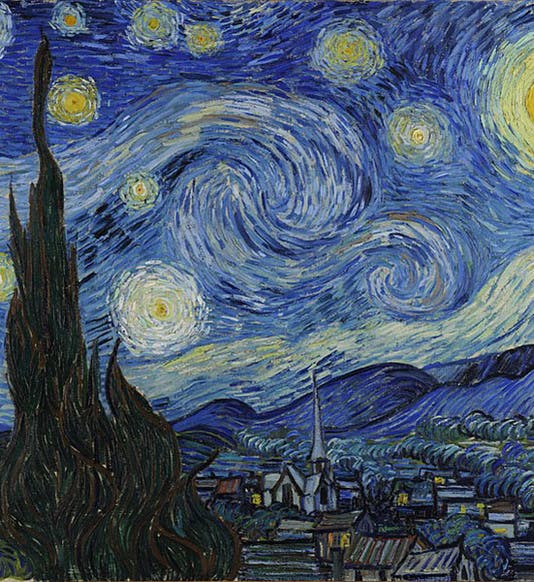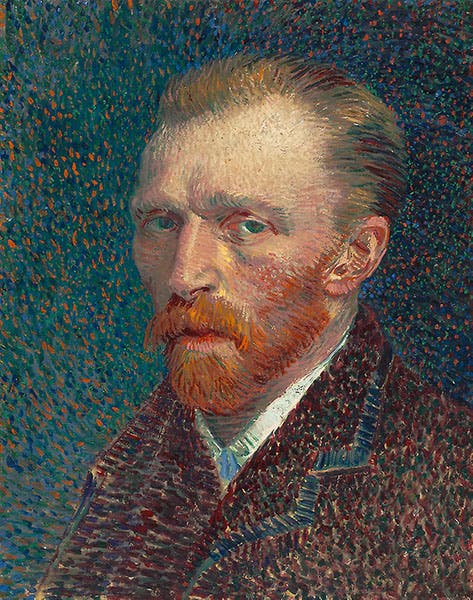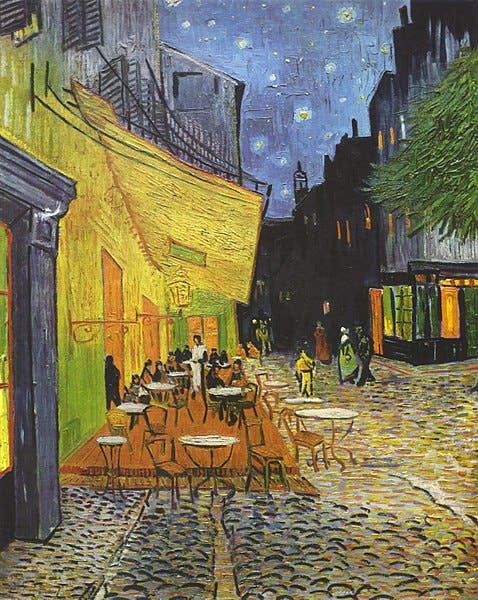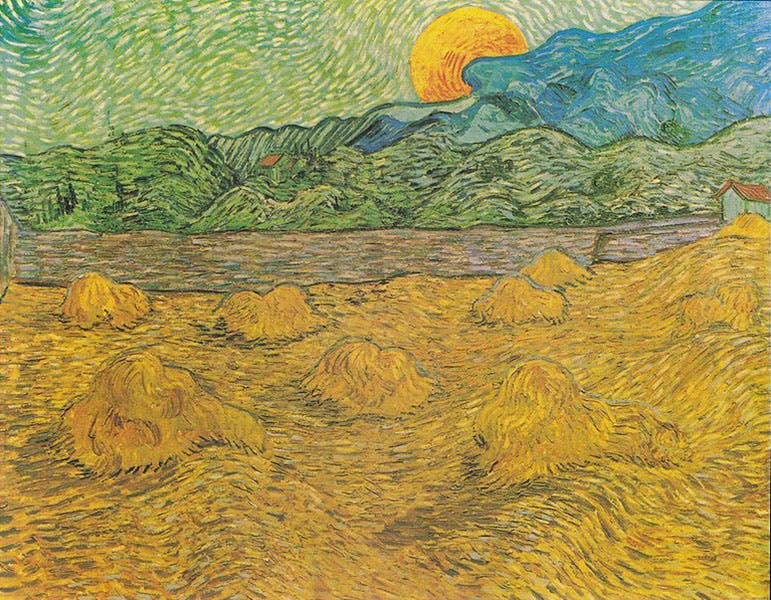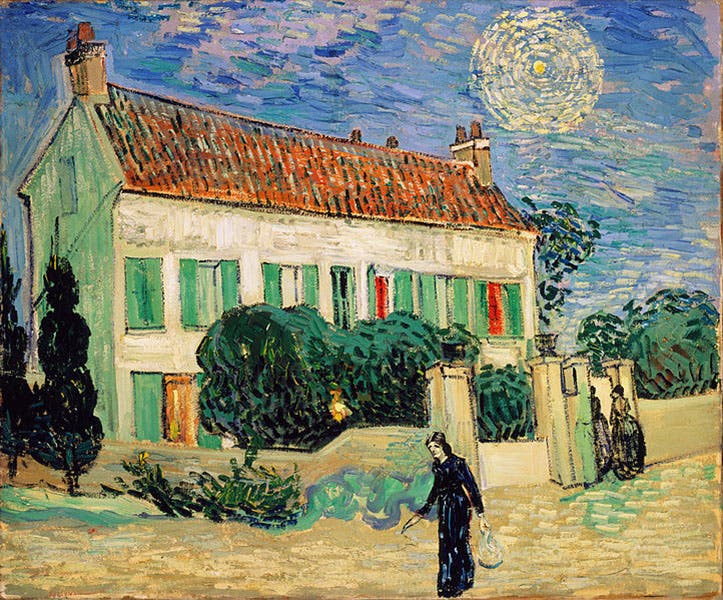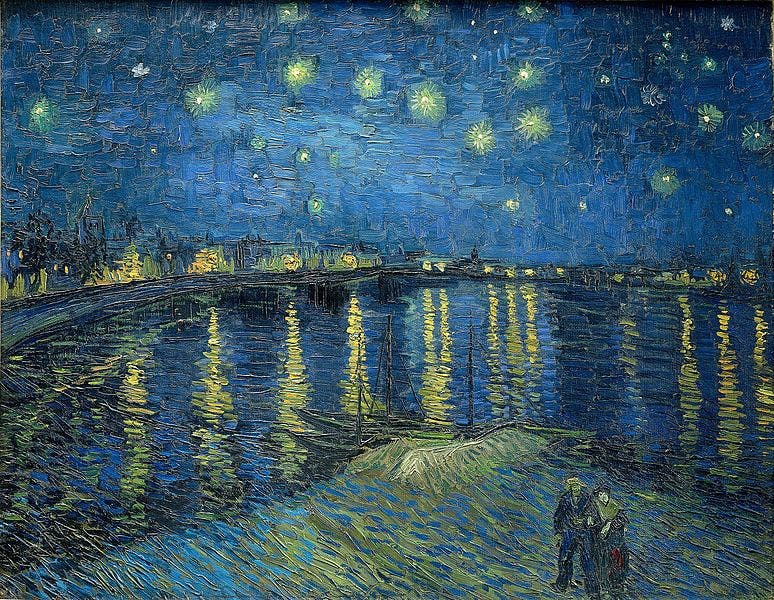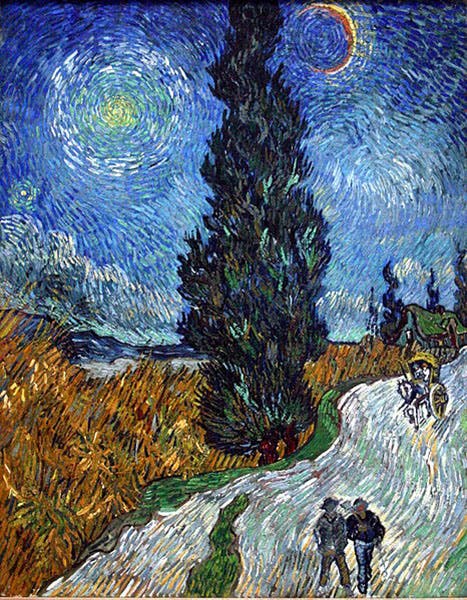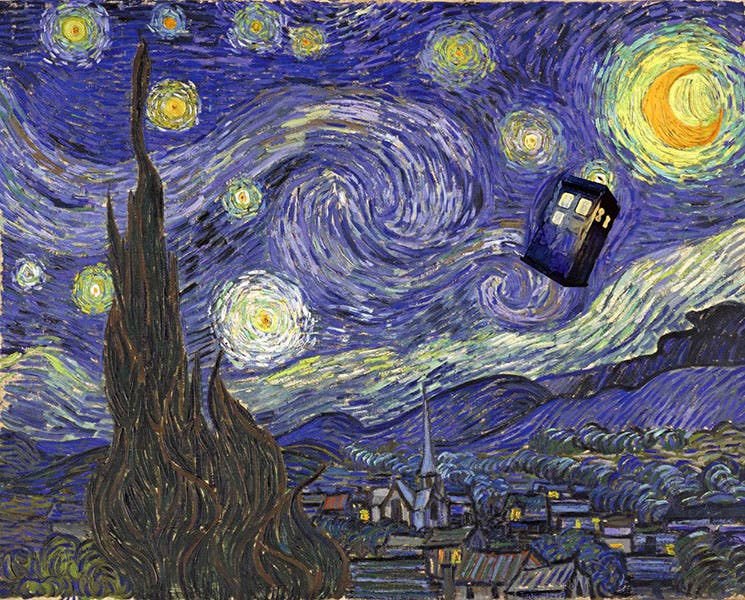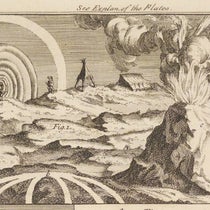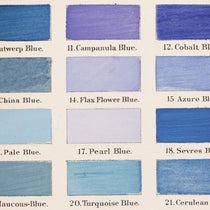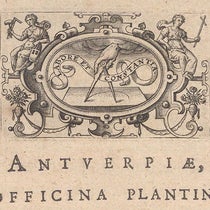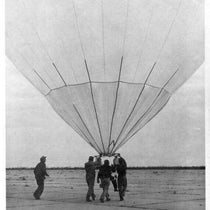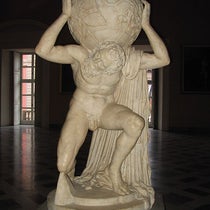Scientist of the Day - Vincent van Gogh
Vincent van Gogh was born on Mar. 30, 1853. Van Gogh left us six paintings that show views of the night sky. The most famous, indeed one of the best-known paintings in the world, is Starry Night, painted in June, 1889, and now in the Museum of Modern Art in New York (first image, above). But he also did Cafe Terrace at Night, painted in September 1888, at Arles, now in the Kröller-Müller Museum in the Netherlands (third image, below), and Starry Night over the Rhone, also in September 1888, now in the Musée d’Orsay, with a quite recognizable Big Dipper (sixth image). In 1889, he finished Moonrise, just after Starry Night; and then, in 1890, Road with Cypress and Star, painted in St. Remy in May, 1890, now in the Kröller-Müller Museum (seventh image). Finally, White House at Night, now in the Hermitage Museum, was completed just a month before his suicide in July, 1890 (fifth image).
Astronomers have long been fascinated by these paintings, wondering if they show real views of the sky, because if so, then that might provide information that would allow the paintings to be dated. Since Van Gogh did not date his paintings, the only way to sort them out is through his correspondence, but since he did not date many of his letters either, several paintings have been troublesome. Van Gogh’s night-sky paintings have been tackled by the foremost "forensic astronomer" of our age, Donald Olson. Olson concludes that Starry Night is a composite and does not reflect a view at a specific time, but he argues that two other paintings can be precisely dated; Moonrise (fourth image, just below) depicts the eastern sky from Van Gogh’s asylum room in St. Remy as it appeared at 9:00 PM on July 14, 1889, and White House at Night (fifth image, below) shows Venus as seen in the town of Auvers-sur-Oise on June 16, 1890.
Not all art historians are thrilled by astronomical forensics, especially if it implies that an artist was tied to a realistic depiction of the world, but Olson is convincing on these two paintings. Smithsonian Magazine did a feature on Olson some years back; it is available online, although without the images, but you can find them all here. The article also discussed Olson’s work on other famous paintings besides the Van Goghs discussed here, including everyone’s angst-filled favorite, The Scream, by Edvard Munch.
There is one version of Van Gogh’s Starry Night that has not been dated, although from appearances, it would seem to come from some point in the future (eighth image, below).
Dr. William B. Ashworth, Jr., Consultant for the History of Science, Linda Hall Library and Associate Professor emeritus, Department of History, University of Missouri-Kansas City. Comments or corrections are welcome; please direct to ashworthw@umkc.edu.

